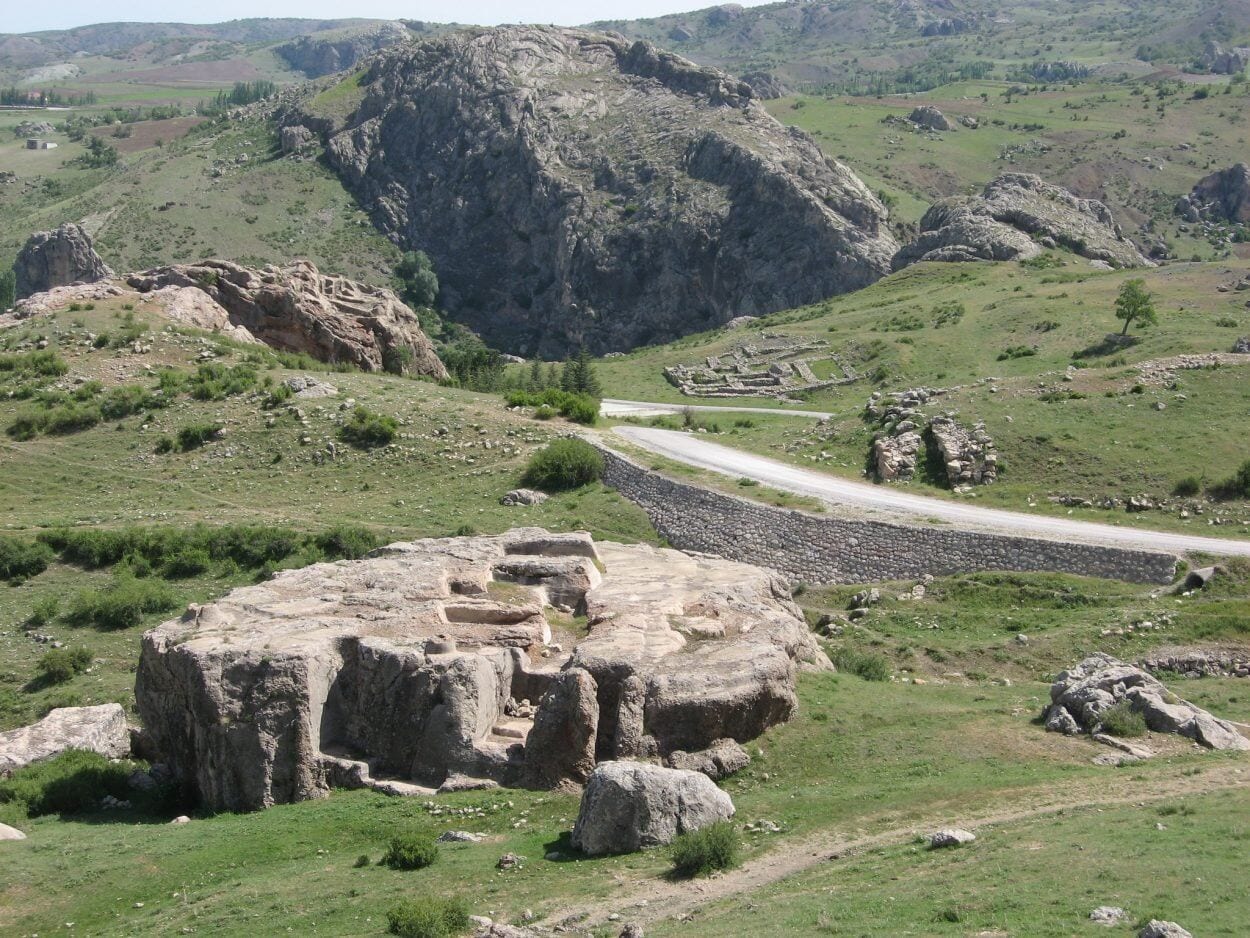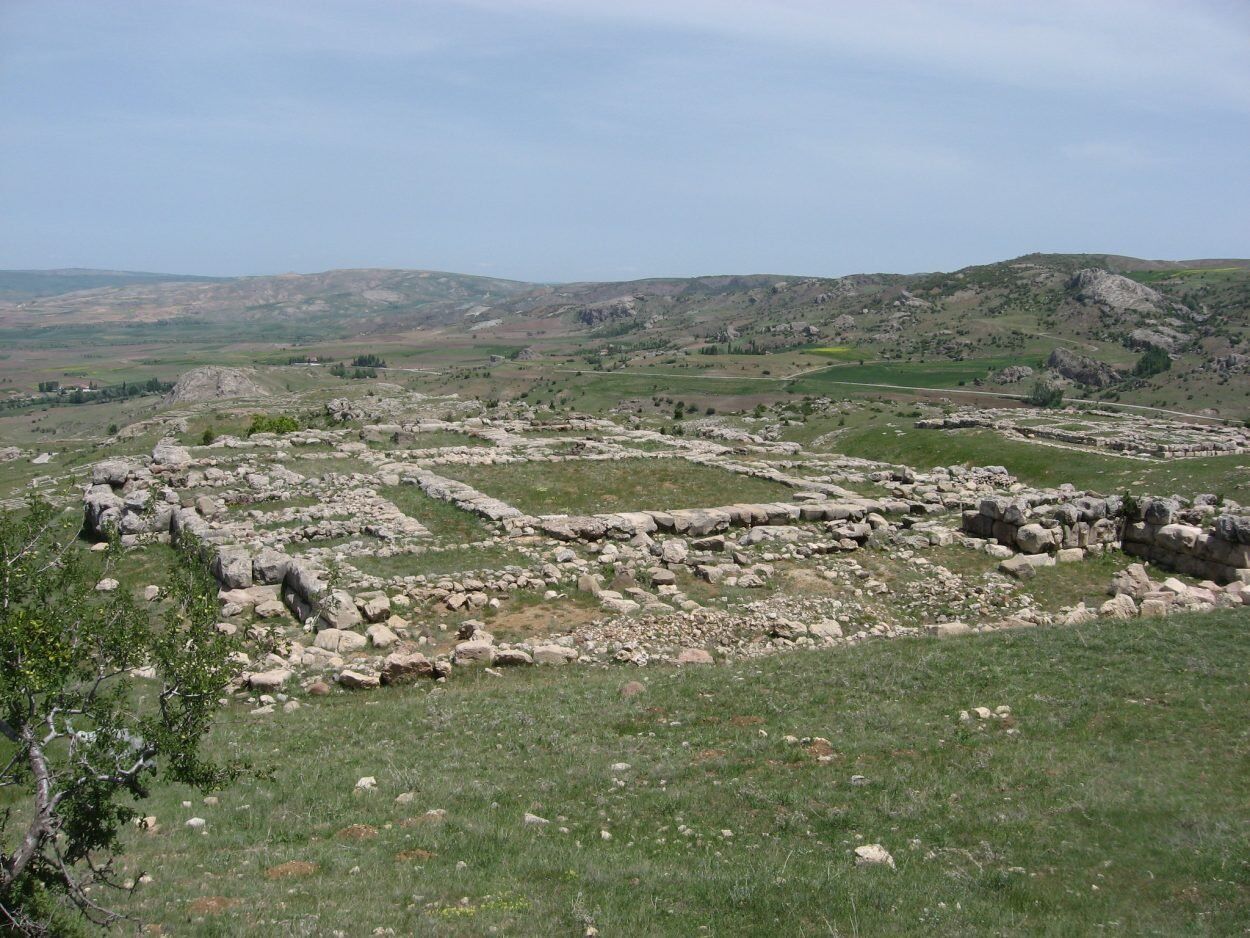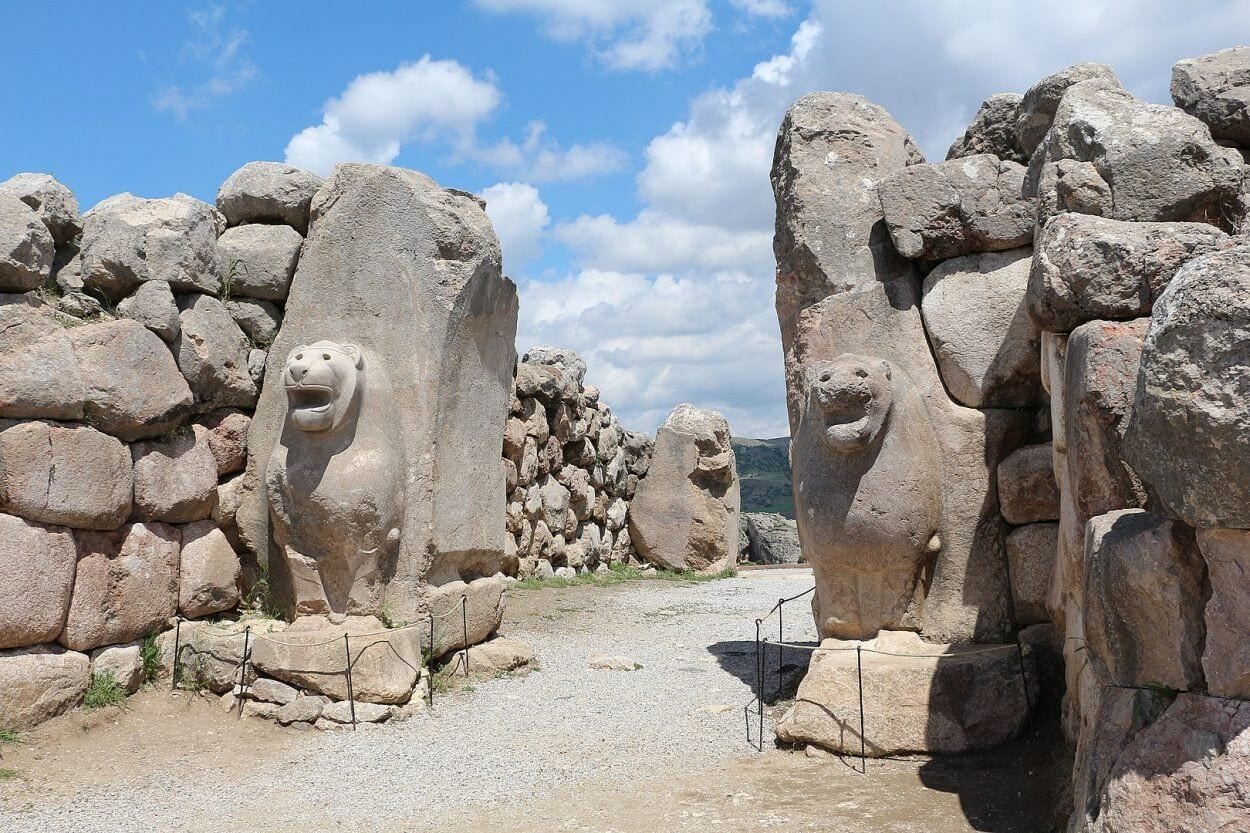Hattusa was the capital of the Hittite Empire, centred in modern-day Boğazkale, Turkey.
The Hittites were an ancient Anatolian people, who established an empire covering Anatolia, northern Levant, and Upper Mesopotamia.
The Hittites Empire came into conflict with the major bronze age powers at the time, including the Egyptian Empire, Middle Assyrian Empire, and the empire of the Mitanni, reaching their peak around the mid-14th century BC.

Before the arrival of the Hittites, the region was inhabited by the Hattian people known as the “land of Hatti” around 2000 BC. The Hattians were absorbed into a new Hittite state either by conquest or gradual assimilation, but the origins of the Hittites are divisive with some academics speculating a connection with the Yamnaya culture of the Pontic–Caspian steppe, the Ezero culture of the Balkans and the Maykop culture of Caucasus.
Around the middle of the 17th century BC, King Hattusilis I established Hattusa as his capital on a section of a mountain slope at the southern end of a small fertile plain.

At its peak, the city had a population of 40,000 and 50,000 inhabitants and covered an area of 444 acres, comprising of an inner and outer precinct, surrounded by a course of walls that were built during the reign of King Suppiluliuma I between 1344 and 1322 BC.
The inner precinct contains a citadel, with several large civic buildings, the temple district, the Sankale (a 60-meter high rock with a fortress on the summit) and the South Citadel. The precinct was accessible via the King’s Gate, the Lion Gate and the Yerkapi, meaning “the gate in the ground” which is a large artificial embankment that runs for 70 metres.

The outer precinct contained the Great Temple, a library, an industrial district, and various dwellings built from timber and mud bricks. The city was overlooked by the Büyükkale (Great Fortress) which was the royal residence, or acropolis.
Hattusa was destroyed along with the Hittite state around 1200 BC (evident by traces of burning) during the Bronze Age collapse. This was a violent period in history where many major cities and civilisations collapsed throughout the Near East, Anatolia, the Aegean region, North Africa, the Caucasus, the Balkans and the Eastern Mediterranean.

Excavations suggest that Hattusa was gradually abandoned over a period of several decades as the Hittite Empire disintegrated. The site was subsequently abandoned until 800 BC, when a modest Phrygian settlement appeared in the area.
One of the most important discoveries at Hattusha has been the cuneiform royal archives of clay tablets, known as the Bogazköy Archive. The archive contains the oracular prophecies, history and literature of the Hittites, in particular of note are the terms of a peace settlement reached years after the Battle of Kadesh between the Hittites and the Egyptians under Ramesses II, in 1259 or 1258 BC.
Header Image – Lion Gate, Hattusa – Image Credit : Bernard Gagnon – GNU FDL





